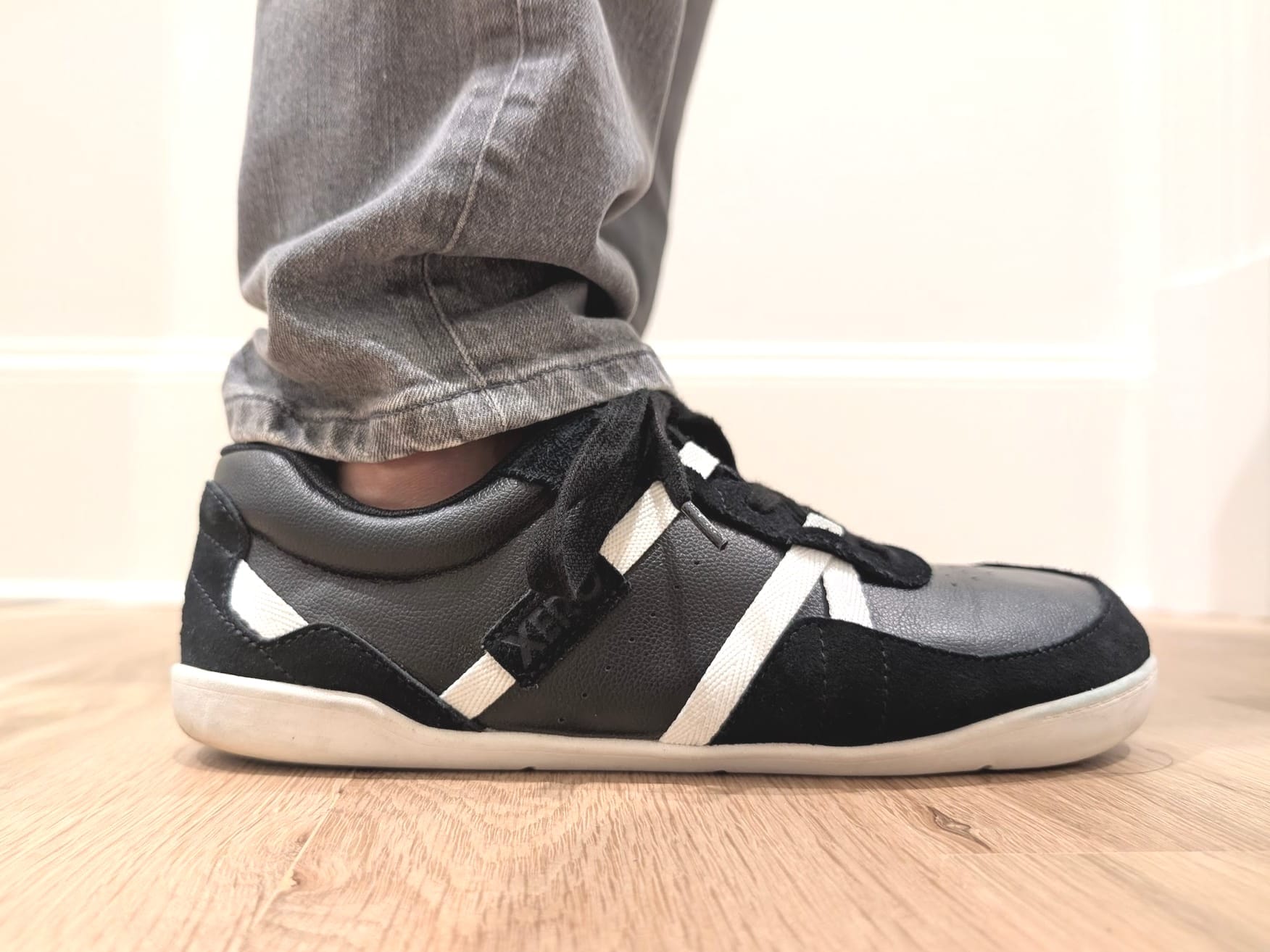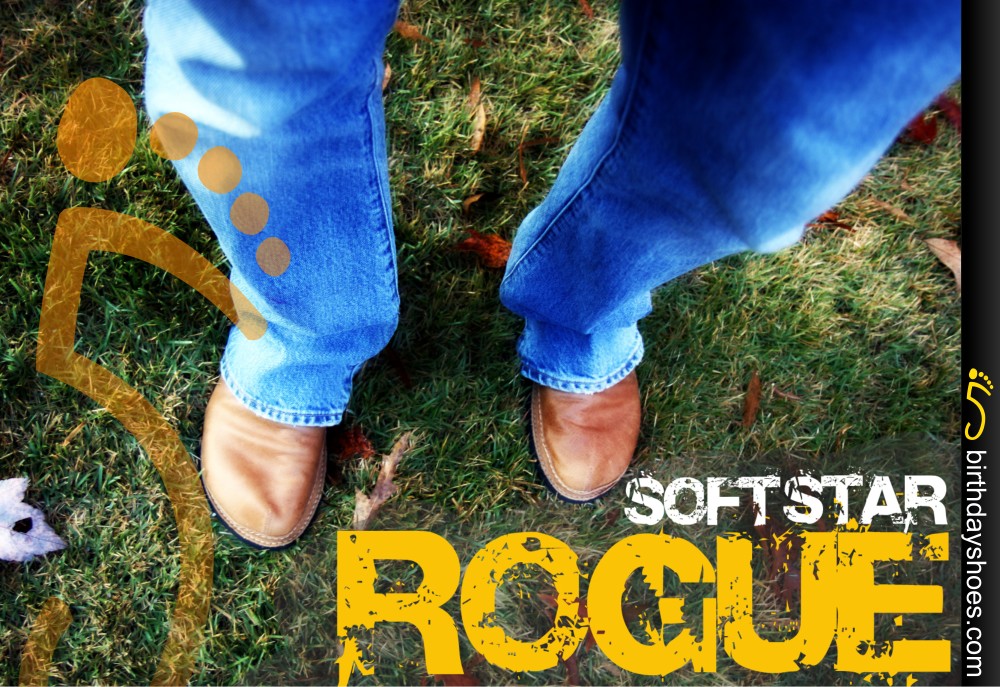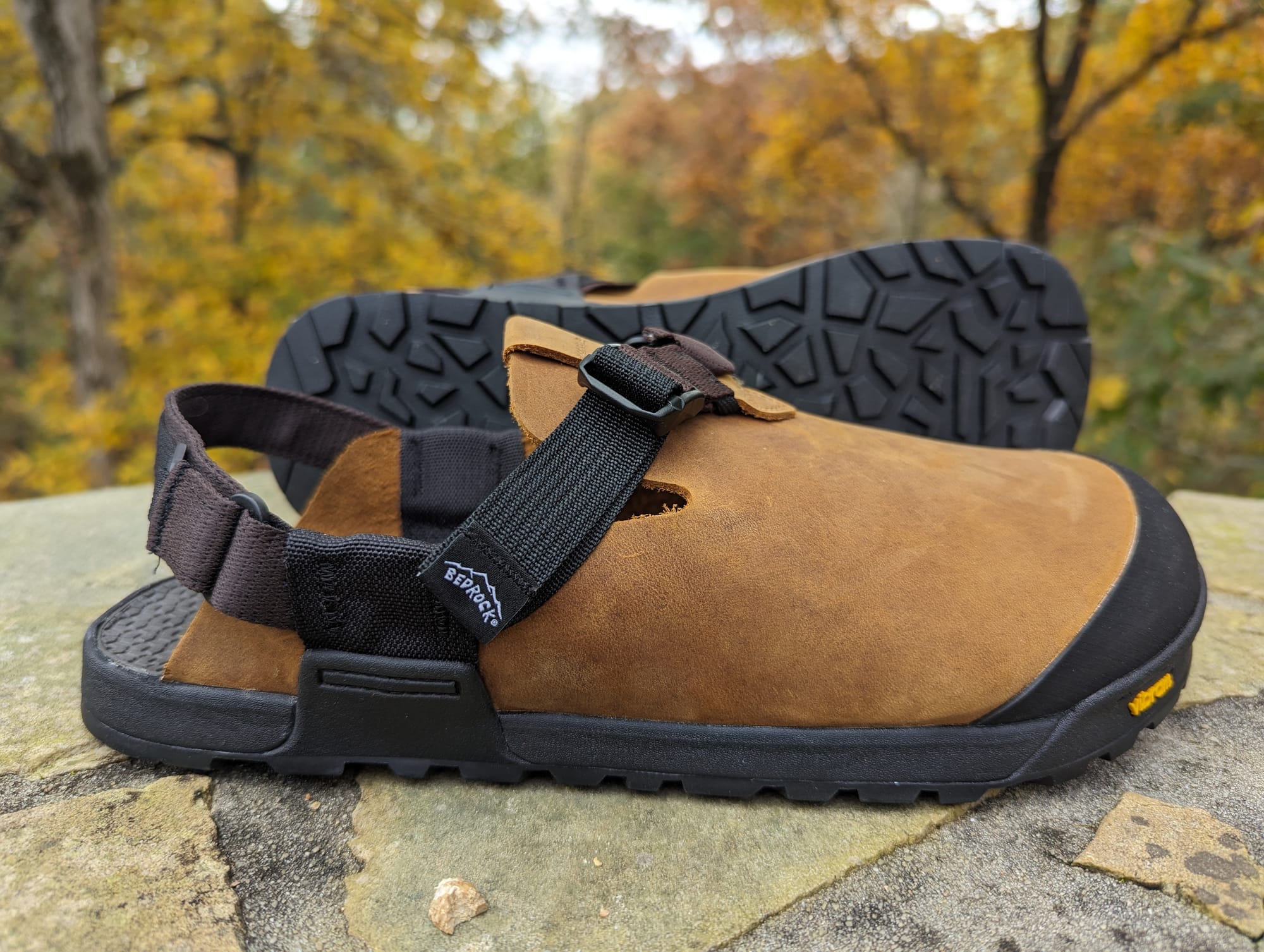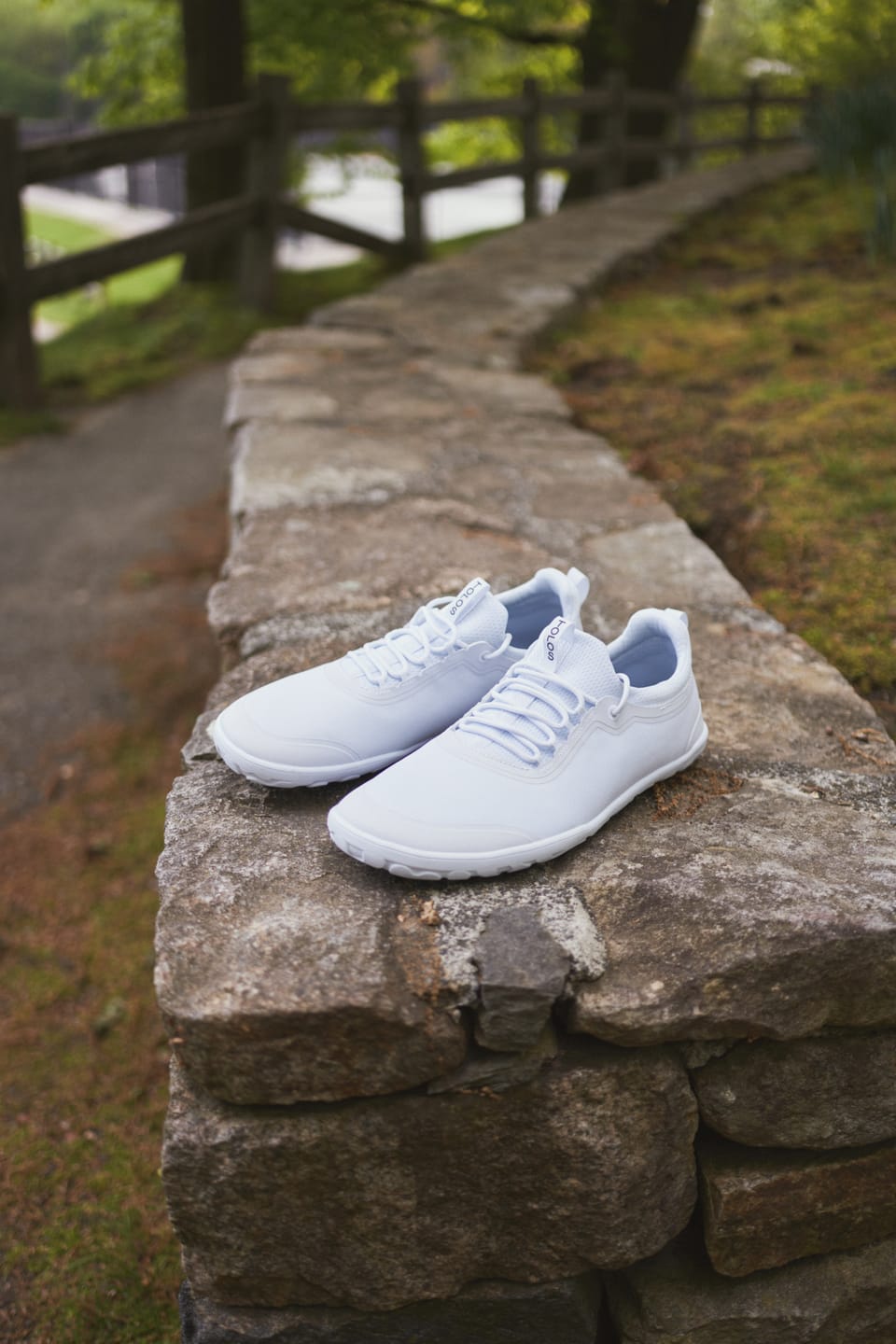Reebok RealFlex Natural Running? A "Barefoot" Running Shoe?
Reebok enters the "barefoot" running shoe fray with their not-so-minimal take on natural movement.
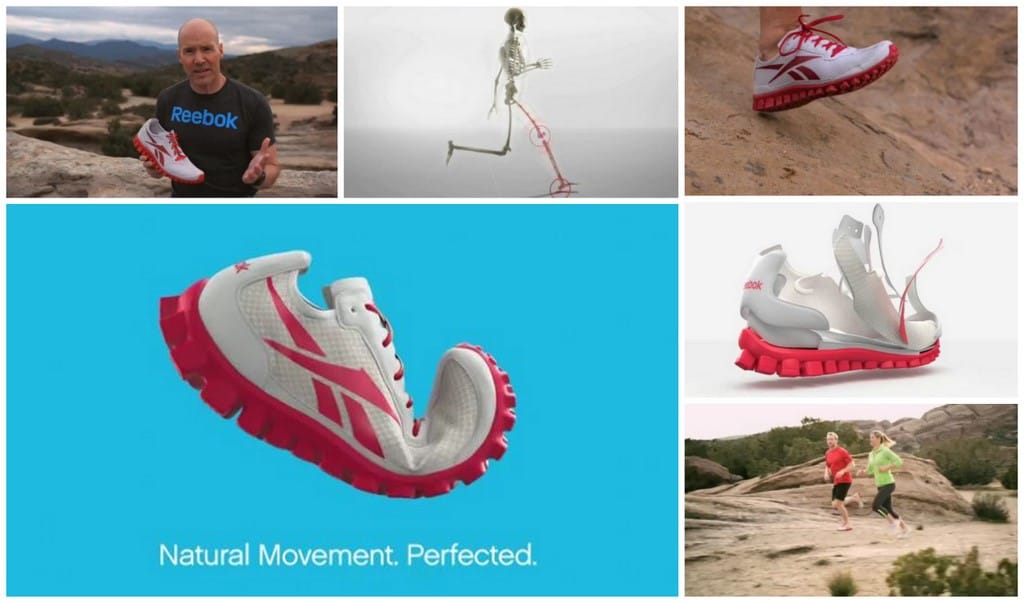
Reebok officially joined the bandwagon of barefoot running "or natural running." That may be understating the significance of this event — Reebok has not just created a "natural running" shoe. No. They have perfected natural movement.
(This is sarcasm.)
The Reebok Realflex is a new* shoe design intended to allow a foot to flex naturally but with ... wait for it ... protection! Apologies for my sarcastic tone, it's just a bit mind-numbing to read how the company that brought us the EasyTone can lay claim to perfecting nature. Perfection and protection — enter the Reebok Realflex.

Just a little background on barefoot/natural running shoes ...
Before we delve further in to the Reebok RealFlex Run, if you're new to the concept of natural or barefoot running you might take a few minutes to read up on what you've been missing. Here are some highlights:
- On running naturally or gently (the key to running without pain or injury)
- "What?!? 'Barefoot running shoes?' That makes no sense!" Well, we try to make sense of it here, including explaining some criteria for evaluating shoes for natural/barefoot function and movement (The Reebok RealFlex Run would fall in the "Wherefoot" category, in case you're wondering).
- And finally, the Reebok RealFlex's release likely has a lot to do with the success of Vibram FiveFingers — those are the original toe shoes.
Now about that RealFlex Run ...
Here we go again.
I've got to handfoot it to Reebok (and Fila for the Skeletoes), way to jump into marketing a new product with gusto—and a lot of money.
Don't take my word for it, just hop over to YouTube today (April 14) and you'll see that Reebok has a huge masthead promoting the RealFlex in all it's 76 "sensor" glory. Actually, the little sensors — anthropomorphic foam rubber pods that cheer you on as you run — are funny little foam monsters. More on those little guys later.

If you click on through to Reebok Realflex page (here — link no longer works), you'll get treated to a full-on explanation of the Reebok Realflex including the background behind the design, which is, believe it or not, barefoot or natural running. The video explaining all of this is no longer around, but here's a transcription of it below:
Transcription of the Reebok RealFlex info-video
I've transcribed the RealFlex video below. It's worth the read if you don't want to miss the little gems of marketing brilliance Reebok is spinning:
If you look at the human foot it's actually a lot more flexible than you might imagine. When you look at the bones inside the foot there's a lot of different joints and angles that a lot of people aren't familiar with. And when your foot moves naturally it doesn't just flex in the forefoot it flexes throughout the foot so the idea of a natural running or barefoot shoe is to allow your foot to flex naturally everywhere it's supposed to move.
So when you look at natural running it all seems very, very good. It's bio-mechanically correct. We're seeing less joint injuries out there as well. But the problem with it is that natural running makes sense in the natural world. When you get into the man-made world where things are made of concrete and things like that you need something with a little more protection. So our solution is to build in that natural flexibility and natural motion that your foot needs yet protect it when it gets on those hard surfaces.
So our solution is a little different. We want to keep everything that's great about barefoot running. When you land on that forefoot it's bio-mechanically efficient and you see lower injury rates in joints. But we want to take that and improve it — namely by adding protection.
There's two problems with barefoot running. One is landing on the forefoot on hard man-made surfaces such as concrete tends to induce stress fractures. We want to protect that.
So we're taking your foot and raising it up off the ground and protecting it throughout the foot with 76 sensors each designed to serve a specific purpose under your foot. Back in the heel the sensors are joined together. That's going to give you heel impact. One of the other issues with running barefoot is that when you're running downhill you can't land on your forefoot so you're going to need that heel protection and this build that in. On the lateral side of the back of the shoe we build those posts a little square to give you support and stability. Up in the forefoot we link those pods together. These nine pods right here are what's giving you the impact protection up in the forefoot.
All combined it gives you the feel and motion of natural running but with protection. That's the difference with RealFlex.
We continued the idea of natural running into the upper of the shoe as well. And to do that we took out everything that wasn't necessary to the upper fof the shoe. So when you look at the upper of the Realflex shoe you'll notice there's no lining or padding inside. What's outside the shoe is inside the shoe as well so the upper is very flexible and allows your foot to move just as naturally as the bottom does.
So the advantages of barefoot running make a lot of sense. We wanted to keep what made sense and make it even better. RealFlex is natural movement perfected.
There you have it. Reebok Realflex is natural/barefoot running movement perfected with protection.
Watching that video I can't help but think I'm watching a magic trick. In this case, the magician is laying out a convincing case for the benefits of barefoot running. He talks about foot flexibility and running on your forefoot to distribute shock to your muscles. It's "bio-mechanically correct." Of course if you're paying attention, you'll catch our magician's "prestige" — it's when he starts talking about those brutal man-made concrete surfaces. For those, "You need something with a little more protection."
The "P" Word — "Protection"
Or focusing on one aspect of the foot at the exclusion of all others ...
I'm going to pick on Reebok but every "barefoot shoe" manufacturer uses the "p" word — protection. It's just the easy way to argue for shoes over staying barefoot. Nevermind that your eyes and the sensitivity of the foot are natural solutions to avoiding the need to protect your feet from danger. Shoes and protection — they go hand in hand.
I'm picking on Reebok because they really pound the table with the "p" word. In fact, once "protection" is dropped in this video, it (some variant of it) is used another eight times. "We want to protect that." And don't we all need a little protection? A little cushioning? Check.
The need for protection established — and the solution being lifting the foot off the ground with a bit of foamy sole — Reebok more or less jumps the shark by equating natural running to having foot flexibility. Nevermind that this focus is at the exclusion of so many other factors important to a "barefoot running shoe" (These would likely fall in the "wherefoot" category, by the way). And the Reebok Realflex solution to having a thicker sole while maintaining foot flexibility is 76 "sensors." These are mini-platforms collaboratively comprising a sole that has a grid-like pattern—cough Nike Free cough. So equipped, the Realflex's sole is able to twist and turn and move dynamically with the foot (assuming the videoed flexibility is any indication — we've yet to get our feet into a pair). That's the theory, anyway.
The problem is that foot flexibility is but one of the many facets of the human foot. It's a little maddening that Reebok has chosen to call the 76 foam pods "sensors" when they are lifting the foot off the ground and necessarily robbing the foot of sensations by muting ground feel. Every shoe does this to some extent. Vibram FiveFingers even do it. A pair of socks even do it. And if you ask me, it's the incredible sense of the foot that most directs one how to run naturally.
The foot has something like 7,000 or more nerve endings. Even if a block of foam perfectly transmitted a single ground signal to the foot, it'd still be a massive reduction in sense — 76 is not 7,000.
But they are cute little monster marshmallows, right?
And what about that RealFlex heel? Might that impact correct biomechanics?
Even though one can run downhill barefoot in such a way as to minimize impact on your knees and joints (Jason Robillard suggests how to do his barefoot "downhill mogul ski technique" here), Reebok decided to give the RealFlex a thicker heel.
The problem with a heel in a running shoe is this: lifting the heel changes your bio-mechanics, making it much more likely you heel-strike. That extra bit of foam under your heel just can't help but catch the ground when your foot is about to land on it's forefoot. How can the Reebok RealFlex talk about the importance of running landing with your forefoot in one breath and then design a shoe that will encourage a heel strike? And while I've not yet run in the RealFlex (an important disclaimer, for sure), I don't see how this (heel-striking in them) can be avoided — at least for many, if not most, runners.
And why would you design a shoe in such a way that will affect 100% of your running form for downhill running, which probably only encompasses 50% on average of your running?
Perhaps human beings never walked downhill barefoot.
Is the Reebok RealFlex "Natural Movement Perfected"?
I'm skeptical any shoe manufacturer has perfected millions of years of trial and error (evolution) or omniscient creation (intelligent design), but who knows, maybe Reebok RealFlex is perfection. What do you think? Anyone grabbed a pair yet? If you're looking to pick some up, CitySports has them for $90 shipped free.
And if they're designed to protect our feet from man-made surfaces — like concrete and "things like that" — why are Reebok's marketing materials all showing runners wearing RealFlex shoes while running on natural surfaces?
Huh?
Trying on a pair of Reebok RealFlex shoes — Update 5.15.2011
First off, in no way is this a true review of a pair of shoes — trying on a pair and walking around a store in them just doesn't cut it as "enough" to call any thoughts a "review." However, since there were some initial thoughts I had on my try-on experience, I thought I'd share them.
I like the Reebok RealFlex upper. It's a suede-like material that doesn't feel very structured, and even though I was wearing a half size too small (I think — they didn't have 10.5 in stock), it still felt comfortable — mind I was wearing socks. However, the insides looked like they would be comfortable on bare feet, too.
For that matter, I felt that the upper was more comfortable than both my Nike Free Run+ and the Nike Free 3.0s.
And since I'm comparing, just by my eyes and initial feel, I'd say the heel thickness on the RealFlex was closer to the 3.0 Frees than the Free Run+ (a.k.a. 5.0 Frees). That said, the RealFlex sole actually felt stiffer to me than a pair of Free Run 2s (the new versions of the Free Run+/5.0s — wow this numbering system with Nike is confusing!) CitySports Atlanta had in stock.
Where things fell apart on my initial try-on was that the outside part of the ball of my foot kept wanting to slide off the sole. Seriously. Just walking around the store my foot wanted to slip off the sole to the outside on the front of the shoe. What's up with that? I mentioned it to the store manager and he indicated that others had made a similar comment. Weird. That said, apparently the RealFlex is flying off the shelves — a testament to a strong marketing strategy by Reebok, even if it is over-the-top and contradictory (as detailed ad nauseum above).
Until I can try on a pair of 10.5s to confirm my size and spend some true time in the RealFlex, this will have to suffice for initial thoughts. I'm very curious if anyone else has felt really destabilized in them &Mdash; that was my lasting takeaway: why did I feel so unstable? Why was my foot wanting to slide off the top of the shoe (in a shoe sized too small)? Anyone else notice this?
One more update 5.23.2010: Just ordered a pair from CitySports. Stay tuned.
* Well, a shoe design that is "new" insomuch as being what appears to be an interpretation** of Nike's popular Nike Free line.
** Not completely unlike how Fila's Skeletoes shoes are a "new" take on Vibram FiveFingers. Just sayin'.

